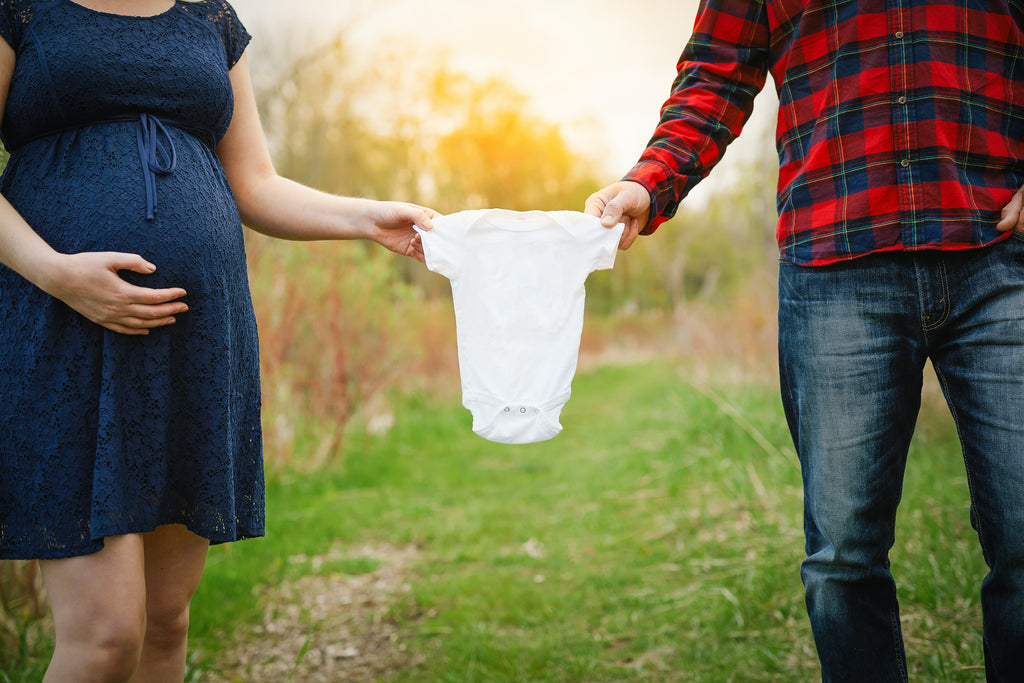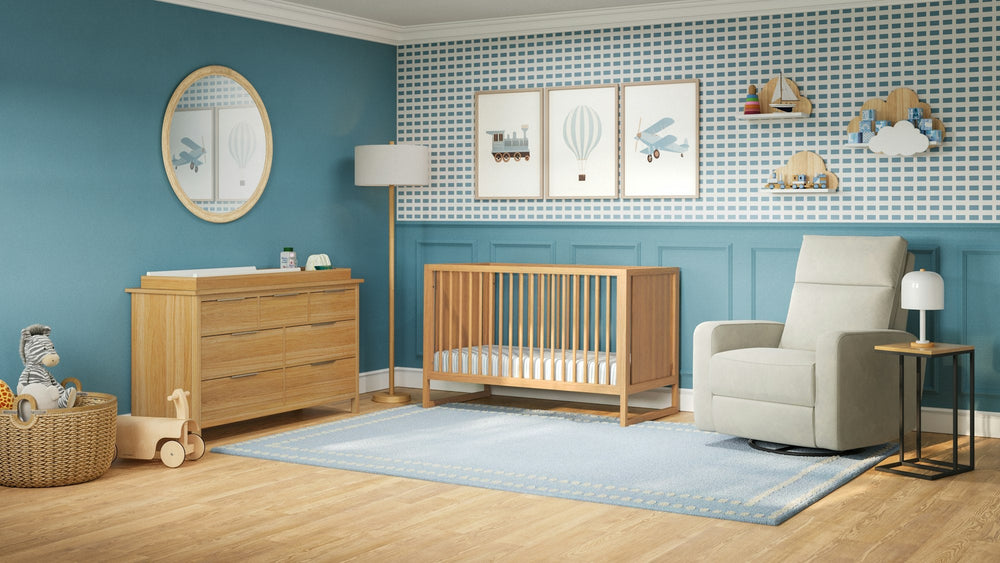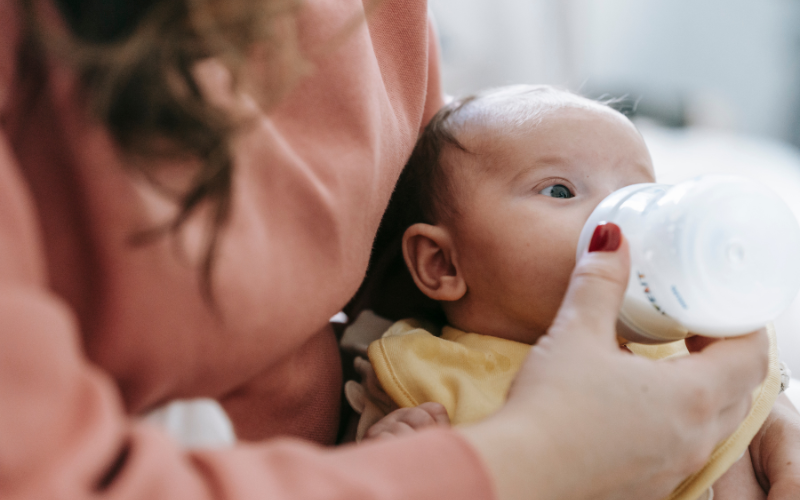Your Third Trimester of Pregnancy: Preparing to Meet Your Baby!

The third trimester is an exciting time in your pregnancy. You are in the home stretch! The end of your pregnancy is near, as is the beginning of parenthood. You’ve probably started thinking about everything from strollers to breastfeeding to what to pack in your hospital bag.
The third trimester is characterized by the return or uptick of some difficult symptoms like back pain, hemorrhoids, fatigue, and frequent urination. However, your excitement about finally meeting your baby will hopefully overshadow the downside of those annoyances and aches.
We have put together a definitive guide of what to expect during this final and exciting phase of your pregnancy, so read below, delve right in, and enjoy learning about the third trimester.
Changes to your body and symptoms
By this stage of your pregnancy, you have most likely experienced weight gain and have also felt your baby’s first fetal movements. There’s also a high chance that you’ve experienced heartburn, constipation, and seen varicose veins pop up, although if you’ve avoided these symptoms thus far, good for you! The third trimester brings many new changes to your body, both physically and hormonally.
You will also experience many feelings and emotions as you reach the end of your pregnancy and throughout the first weeks postpartum. Many women suffer from postpartum depression and anxiety after giving birth, and we encourage you to seek help if you think you may be suffering.
This section will look at the changes your body is likely to undergo as well as signs and symptoms to watch for that indicate it’s time to call your healthcare provider.
Aches and pains
3rd-trimester aches and pains are prevalent and a daily occurrence for most pregnant women. With all the weight you’ve gained from growing your baby and the increased amniotic fluid and blood in your body, you will most likely feel exhausted often.
You may have already been having difficulty finding a comfortable position to sleep in, as most doctors recommend that you avoid sleeping on your stomach or your back.
In addition, backaches, shortness of breath, and pain and pressure in your pelvic area are common.
Resting when possible and elevating your legs will help to alleviate some of the pressure that you feel. You may also find it more comfortable to rest on your side. Regular exercise such as walking, yoga, or swimming can also aid in alleviating some of your discomforts.

If you are having difficulty sleeping, think about purchasing a pregnancy pillow specifically designed to support the shape of a pregnant woman’s growing belly. These pillows allow you to sleep comfortably on your side while supporting your back and legs.
You may even begin feeling Braxton Hicks contractions. The American College of Obstetricians and Gynecologists (ACOG) describes Braxton Hicks contractions as practice contractions that can be very painful. The ACOG says if rest and hydration make the contractions subside, you know that they are not real labor contractions. Real contractions don’t stop and will happen at regular intervals and increase in intensity and frequency.
Round ligament pain also happens for many women during their third trimester. As your uterus expands, the ligaments in your pelvis stretch to accommodate its growing size and weight. The pain is usually caused by sudden sharp movements, such as standing up too quickly or turning over in bed. The pain, while annoying, is usually short-lived and not dangerous at all.
Physiological changes
All the aches and pains discussed in the previous section are caused by the physiological and hormonal changes that your expanding body is experiencing. As your second trimester ends and you enter the last leg of this journey, your body will expand and stretch in ways you never realized it could.
Your baby is radiating heat at this point, which makes your body and skin feel even hotter. Also, because of the baby’s size and positioning, your blood pressure may decrease if your baby is pressing on the vein that returns blood to your heart.
You may also develop stretch marks on your breasts, thighs, buttocks, and belly, and you may begin to leak colostrum, which is a thin, yellowish liquid that your body produces until your milk comes in fully.
Hormonal changes
Hormonal changes in the third trimester could contribute to mood swings that you may not have experienced since the first trimester. Changes in your hormones along with pregnancy symptoms like fatigue, aches, and pains, and stress can lead to a lot of emotions and sudden changes in mood.
Adequate rest, ample hydration, regular exercise, and a strong support system can help you through this emotional time. It can also help your mood to indulge in self-care. So schedule a massage and a pedicure, take a day off work, have a movie and lunch date with your partner, nap when needed, and be kind to yourself!
Signs of labor
Many pregnant women wonder, “will I know when I am going into labor?” The answer could be yes or no. It is possible to have your water break and have no contractions, and it is also possible to experience consistent contractions for days with little to no progress, so how do you really know when you need to head to the hospital?
There are some signs that tell you labor is likely to happen in the next few weeks or days.
Lightening is a sign that your baby is preparing for birth. Lightening is the feeling that your baby has dropped lower with its head down, settling into your pelvis. This can happen at any stage, from a few weeks to a few hours before labor begins.
At your check-ups, your doctor may also tell you that your cervix is beginning to dilate. Your cervix can dilate to 3m and stay there for several days or weeks. This is considered early labor, but without contractions, you can go home and carry on as usual.
Labor contractions that happen at regular intervals and do not go away with rest and hydration signify that labor is near. A labor contraction feels like a tight band of abdominal pain and pressure. When the contractions have been happening steadily and have increased in intensity or decreased in intervals, it is time to call the doctor.
Prenatal Care
Prenatal care is one of the most important things that you can do to ensure a healthy pregnancy and a healthy baby. The National Institute of Child Health and Human Development (NIH) emphasizes that prenatal care can help prevent or reduce the risk of many complications and help with a healthy pregnancy.
Your healthcare provider will do general health checks, assess your baby’s growth, and ask you if you want to have genetic testing done.
In addition, your doctor or midwife will also tell you about the warning signs of preeclampsia (a dangerous blood pressure disorder), test you for Group Bstrep, a type of bacteria that can be passed to your baby during birth, help you develop a birth plan, and point you in the direction of childbirth classes if you wish to take them.

Your pregnancy is considered full-term once you reach 39 weeks (ACOG), but many healthy babies are delivered between weeks 37 to 39. If your baby is born before week 36, your baby is considered premature. Proper prenatal care can help reduce the risk of having a premature baby.
Fetal Development during the Third Trimester
During your third trimester, your baby can now see and hear you, so you should talk to your baby! Your baby’s brain is continuing to develop and will triple in size during this time. The bones in your baby’s skull will remain soft until after birth to allow for easier passage through the birth canal (although it may not feel easy to you!)
Around weeks 37 to 38, lanugo, the fine hair covering your baby’s body, will shed, but your baby will still be covered in vernix, which is the creamy coating on their skin. Their lungs will be fully formed between weeks 38 and 40.
Your healthcare provider will assess the baby’s position at your prenatal appointments leading up to birth to ensure that your baby is not breech. Most babies will flip downward between weeks 30 to 34; however, there is no need to be worried about a breech baby until you have reached week 37. At this point, your provider may try to help the baby flip.
Third Trimester To-Dos
The third trimester is the time to iron out some last-minute details. Here is a list of some to-dos to check off before your baby’s due date:
1. Plan your maternity leave
Calculate with your partner how much time you can afford off work
Discuss with family and friends who can help immediately after you return from the hospital.
2. Think about childcare
Decide between a childcare center, nanny, home daycare, or family member.
3. Select a pediatrician
Double-check to ensure they still participate with your insurance and are accepting new patients.
4. Install your car seat
The CDC has resources and charts to help you choose and install the correct seat.
You can also have your car seat installation checked by the National Highway Traffic Safety Administration by finding a local inspection location near you here.
5. Finalize your birth plan
6. Pack your hospital bag
7. Keep track of your baby’s fetal movements
If you notice a sudden decrease in fetal movement at any point, or cannot remember when you last felt the baby move, call your healthcare provider immediately.
Preparing for Your Due Date
Your due date is an approximation, not an exact science, so it is best to be prepared several weeks in advance as only 4% of babies are actually born on their due date.
Part of being prepared means having your nursery set up and purchasing all the accessories that you will need. Here is a third-trimester checklist to help you prepare for the postpartum period.
- Crib & changing table
- Diapers in newborn and size 1 (most babies outgrow the newborn size very fast)
- Changing pads, covers, wipes, and a diaper pail
- A glider and storage like those at Nurture&
- Nursing bras, a breast pump, and milk storage
- Panty liners/pads (and vaginal ice packs)
- Comfortable, loose-fitting clothing

The third trimester is the final stage of your pregnancy and is very exciting yet nerve-wracking. You are about to become a parent and have your life changed, but you’ve got this.
By attending your prenatal visits, preparing your home for your baby’s arrival, and taking the time to read articles like this, you’ve already proven your dedication to your baby and motherhood. Take some deep breaths and find the moments to slow down and enjoy these last few months of pregnancy.








